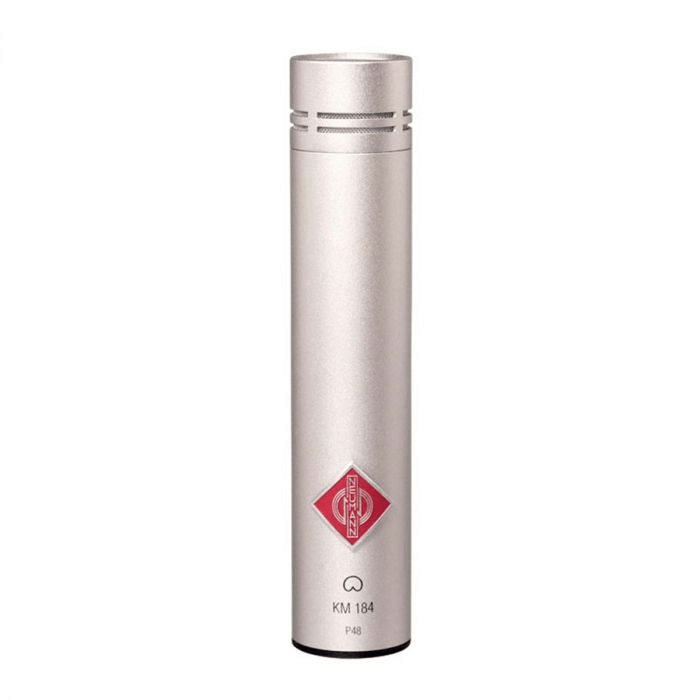Are you looking to elevate your audio game without breaking the bank? Whether you’re a budding podcaster, an aspiring musician, or simply seeking superior sound quality for your projects, a good condenser microphone can make all the difference. However, with so many options out there, it’s hard to know where to start. Worry not—we’ve scoured the market to bring you the best condenser microphones under $200, ensuring you don’t have to compromise on clarity or quality, even on a budget. Get ready to capture your audio with precision and warmth as we unveil our top picks!
When scouting for the best condenser microphones under 200 dollars, there are several key criteria to consider that ensure you’re getting the best value for your investment:
- Sound Quality: The microphone should capture clear, detailed recordings with a wide frequency response and high sensitivity. Look for mics that provide a natural, uncolored sound.
- Build Quality: Durability is important, especially if you plan to use the mic frequently or transport it. A sturdy construction and quality materials can prevent damage over time.
- Polar Patterns: Depending on your recording needs, you might want a mic with versatile polar patterns. Cardioid patterns are common, but the availability of multiple patterns can offer greater flexibility for different recording setups.
- Connectivity: Check for compatibility with your existing recording equipment. Most condenser mics use XLR connections, but some come equipped with USB for direct computer connection, which is a bonus for easy setup.
- Included Accessories: Look for microphones that come with useful accessories like shock mounts, pop filters, or carrying cases. These extras can save money and enhance recording quality.
- Brand Reputation and Reviews: A reputable brand with positive user reviews usually indicates a reliable product. Researching users’ experiences can give you insight into performance and longevity.
Weighing these criteria, here’s a curated list of the best condenser microphones under 200 dollars that offer a balance of quality, features, and affordability.
| Microphone | Price Range (Approx) | Type | Polar Pattern | Frequency Response | Sensitivity | Max SPL | Accessories Included |
|---|---|---|---|---|---|---|---|
| Audio-Technica AT2020 | Under $200 | XLR | Cardioid | 20Hz-20kHz | – | 144 dB | Stand mount, Pouch |
| Rode NT-USB Mini | Under $200 | USB | Cardioid | 20Hz-20kHz | – | – | Integrated stand, Pop filter |
| Blue Yeti USB Microphone | Under $200 | USB | Multiple | 20Hz-20kHz | 4.5mV/Pa | 120 dB | Stand, USB cable |
| AKG P220 High-Performance Condenser Microphone | Under $200 | XLR | Cardioid | 20Hz-20kHz | 20 mV/Pa | 155 dB | Shock mount, Metal case |
| MXL 770 Cardioid Condenser Microphone | Under $200 | XLR | Cardioid | 30Hz-20kHz | 15 mV/Pa | 137 dB | Shock mount, Carrying case |
| Hollyland Lark M2S | Under $200 | USB-C, 3.5mm TRS, USB-A to USB-C, and USB-C to Lightning | Omnidirectional | 20Hz – 20kHz | -37 dBV +/- 2 dB @ 1kHz | 116 dB | 2 transmitters, 1 receiver, 1 charging case, cables, and 2 furry windshields |
| Hollyland Lark 150 | Under $200 | 3.5mm TRS | Omnidirectional | 20Hz-20kHz | – | 112 dB | Cables, adapters, and windshield |
Please note that the specifics such as price and the included accessories can vary based on the seller or any ongoing promotions. Also, sensitivity and Max SPL specifications are not always prominently listed and sometimes might require deep research or consultation with detailed spec sheets directly from the manufacturer. The above table is a simplified guide; make sure to check the latest details for the most accurate information.
Audio-Technica AT2020
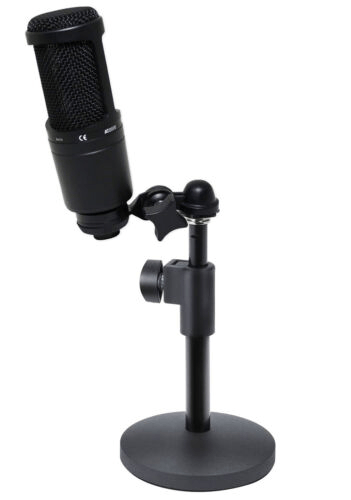
Overview:
The Audio-Technica AT2020 is widely regarded as a secret weapon for home studio owners and podcasters alike. My first impression of this microphone was its sturdy build and professional feel, considering its affordable price tag. As I used it, I found the audio quality to be exceptional, capturing voices with a clear, well-balanced tone that rivals some of the more expensive microphones on the market. It’s incredibly versatile too, making it suitable for a range of audio projects from vocal performances to voice-over work.
Specs:
While I tend to focus on the practical experience over specifications, it’s worth noting that the AT2020 comes with a 20Hz to 20kHz frequency response, which means it catches all the nuances in vocals and instruments. It has a cardioid polar pattern, which I found excellent at isolating the sound source and reducing pickup of noises from the sides and rear.
Pros
- The audio quality is outstanding, with clear highs and full-bodied lows, which contributes to a professional sound.
- Its cardioid pattern effectively minimizes background noise, a common concern for many users in less-than-ideal recording environments.
- The build quality feels robust, suggesting that this microphone can endure the rigors of regular use.
- Surprisingly, it doesn’t require an additional audio interface when plugged into a computer with enough power output, which simplifies the setup.
Cons
- It lacks onboard controls like gain adjustment or a mute button, which means you’ll need to rely on your recording software for those functions.
- A missing shock mount out of the box means you’ll likely want to invest in one to avoid any handling noise during recording sessions.
Price:
The price fluctuates slightly depending on where you shop, but you can typically find the Audio-Technica AT2020 for around $99. This puts it well under the $200 mark, making it my top pick for value vs. performance. Remember, this price doesn’t account for any additional accessories you may need, such as a stand or shock mount.
In summation, the Audio-Technica AT2020 offers a level of clarity and finesse in audio recording that’s hard to find in this price bracket. Whether you’re just starting to explore the world of audio recording or you’re a seasoned content creator on a budget, this microphone is a dependable, high-quality choice that won’t disappoint.
Rode NT-USB Mini
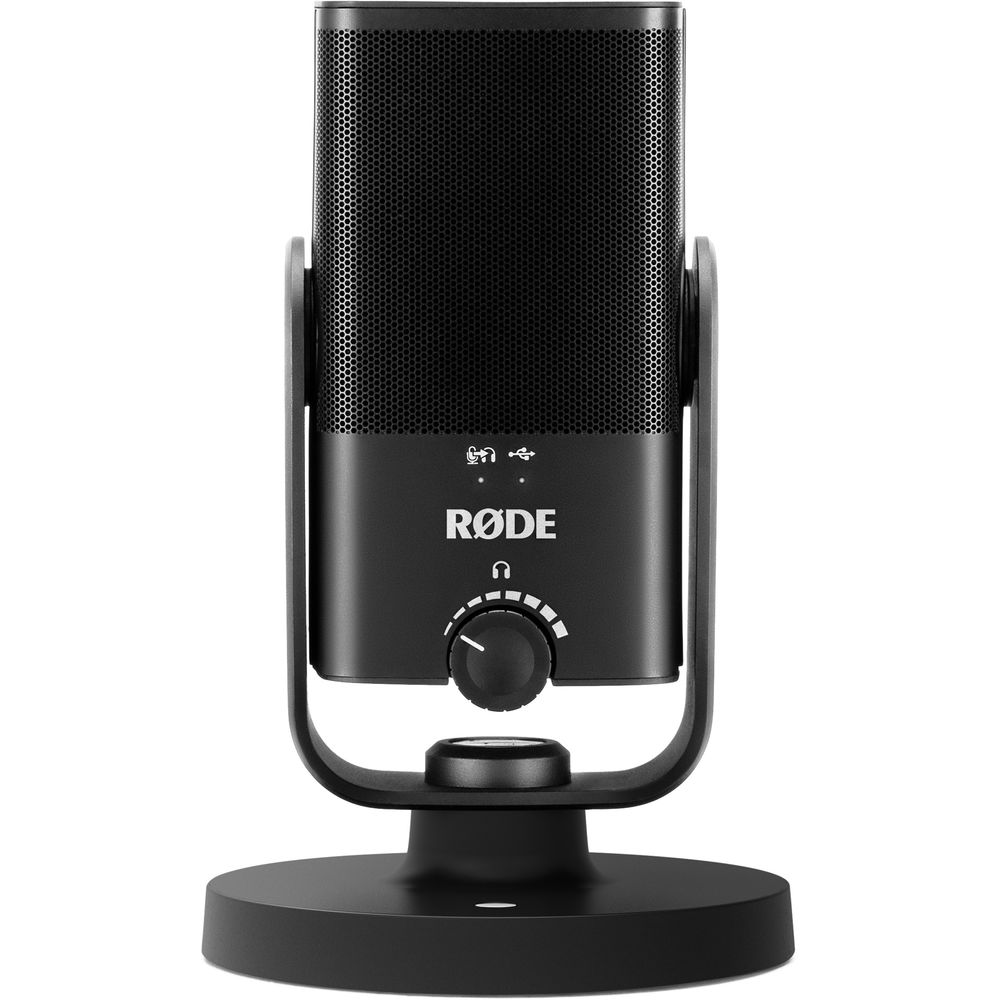
Overview:
The Rode NT-USB Mini is a marvel of engineering, designed for the podcaster, gamer, or musician looking for exceptional audio quality without breaking the bank. It’s a compact, studio-quality USB microphone that builds on Rode’s prestigious reputation for creating excellent audio recording equipment. The mic offers the convenience of USB connectivity, which means you can simply plug it into your computer and start recording straight away, without the need for an external audio interface. It’s also particularly user-friendly, which makes it a great choice for those new to recording.
Straight from personal use, I’ve found the Rode NT-USB Mini to be a delight. Its sound quality is a standout, capturing vocals with a warmth and clarity you’d expect from pricier models. The microphone champions a no-frills approach to setup—just plug it in, select it as your input device, and you’re good to go.
Specs:
- Acoustic Principle: Condenser
- Polar Pattern: Cardioid
- Frequency Range: 20Hz – 20kHz
- Sample Rate: 48kHz
- Bit Depth: 24-bit
- Connection Type: USB-C
Pros:
- The build quality is robust, exuding a sleek and lasting design that can withstand the occasional knock.
- It provides a smooth frequency response, ensuring that your voice sounds natural and clear.
- Its cardioid pickup pattern helps to isolate your voice from background noise, which is a blessing in noisy environments.
- The integrated pop filter is quite effective in mitigating plosives, those pesky ‘p’ and ‘b’ sounds that can interrupt a clean recording.
- Instrumentalists will also appreciate its ability to capture the subtle nuances of acoustic instruments.
Cons:
- The lack of on-mic controls means you can’t directly adjust input levels or mute the microphone, which might frustrate some users who prefer tactile controls.
- Its compact size and fixed stand, while great for portability and desk space, may limit positioning options for the perfect audio setup.
Price:
With a price tag that falls comfortably under the $200 threshold, the Rode NT-USB Mini nestles itself in a sweet spot of affordability and professional-grade quality, often floating around the $99 mark. Given its sturdy build and audio fidelity, it presents great value for money.
Personal Opinion:
My encounters with the NT-USB Mini have been nothing short of remarkable for a microphone at this price point. It’s a genuine workhorse that punches above its weight, consistently delivering pristine audio that rivals more expensive microphones I’ve come across. If you’re looking for a significant upgrade from built-in mics without the added complexity of professional setups, this microphone stands out as a front-runner in the market. The simplicity is its strength, and while some may crave more controls, for the purpose of plug-and-play, it fits the bill perfectly.
Blue Yeti USB Microphone Review
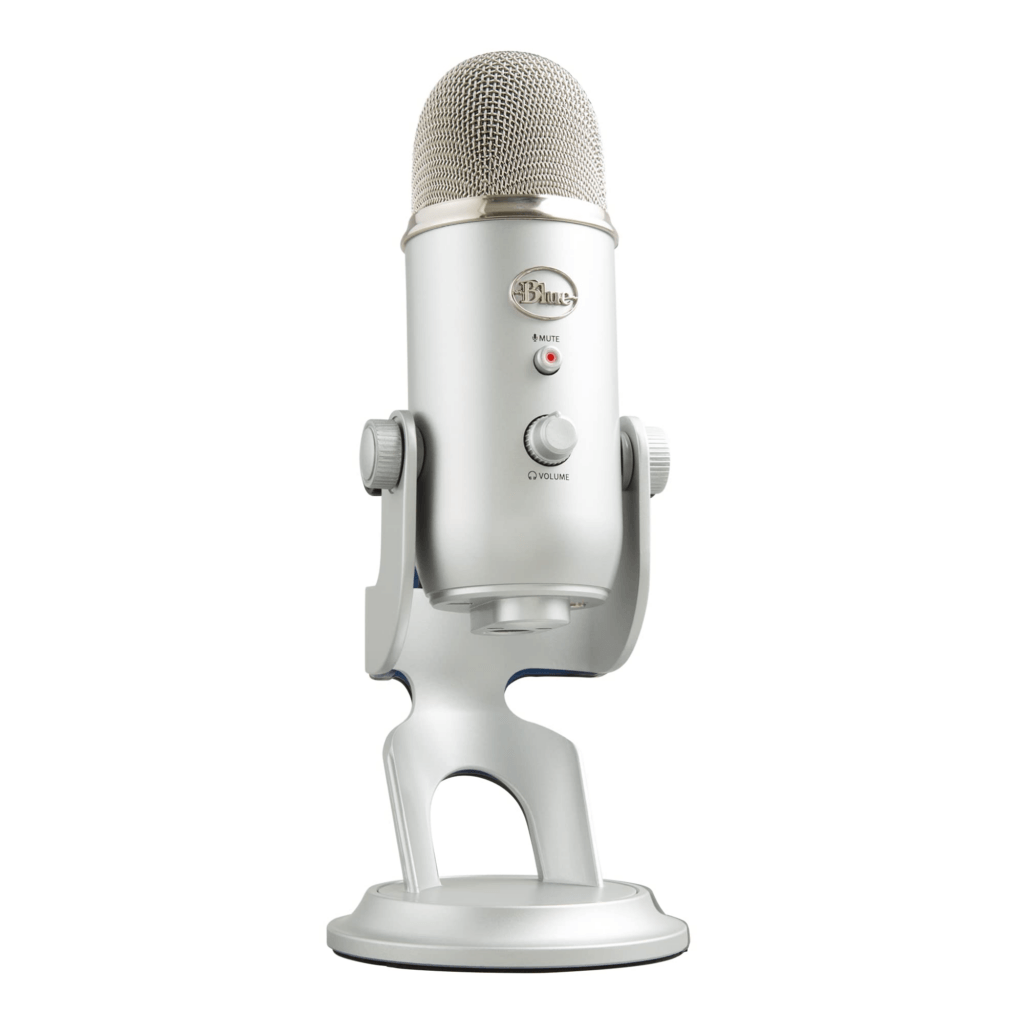
Overview
The Blue Yeti USB Microphone is perhaps one of the most iconic and visually recognizable microphones in modern podcasting, streaming, and home recording. In my experience, what sets the Yeti apart is its remarkable ease of use coupled with versatile functionality. Plugging it into a USB port and you’re pretty much good to go—no additional drivers or software needed, which is fantastic for non-tech-savvy content creators.
Its multipattern selection allows you to toggle between cardioid, bidirectional, omnidirectional, and stereo pickup patterns, giving it a Swiss Army knife-like adaptability for various recording scenarios. This means whether you’re recording a solo podcast, a two-person interview, a roundtable discussion, or even some ambient room sounds, the Yeti has a setting that’s optimized for it.
The build quality is robust – though largely plastic, it feels substantial and well-constructed. The integrated stand is convenient, solid, and adjustable, but can pick up noise from desk vibrations, so I’d recommend a shock mount for serious work. Its on-mic controls are intuitive, with dials for headphone volume, pattern selection, instant mute, and microphone gain, allowing for quick, on-the-fly adjustments.
Specs
- Polar Patterns: Cardioid, Bidirectional, Omnidirectional, Stereo
- Frequency Response: 20Hz – 20kHz
- Sample Rate: 48 kHz
- Bit Rate: 16-bit
- Connectivity: USB
- Headphone Amplifier: Built-in
Pros:
- Multi-pattern versatility caters to various recording situations.
- Plug-and-play with no need for additional equipment or software.
- Sturdy construction with user-friendly controls.
- Real-time monitoring with zero-latency headphone output.
Cons:
- It’s larger and heavier than many rivals, not as portable.
- Included stand might not be ideal for all desk setups and can transmit noise.
- Some may find the aesthetic a little utilitarian for their taste.
Price
The Blue Yeti usually hovers just below the $200 mark, which is a sweet spot for its value proposition. It often goes on sale, too, so keep an eye out for deals that can make this microphone an even more attractive purchase.
To sum up, the Yeti offers a compelling package for anyone looking for a versatile, satisfactory quality USB microphone on a budget. It’s like having multiple microphones in one, and it’s an excellent choice for creators who need a reliable, adaptable workhorse for a plethora of audio projects.
AKG P220 High-Performance Condenser Microphone
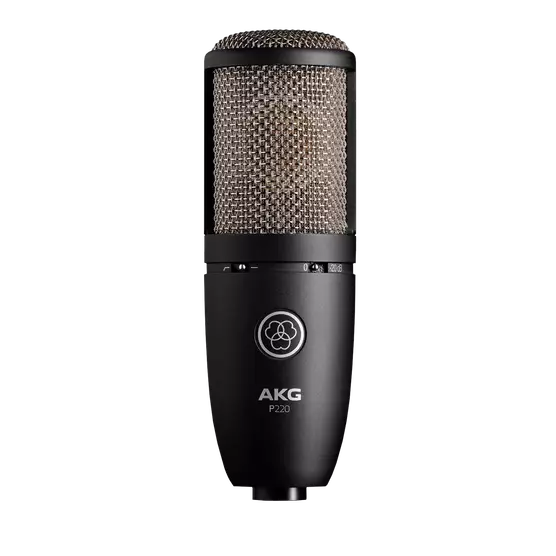
Overview
The AKG P220 is a true gem for anyone looking to step into the world of high-quality audio recording without spending a fortune. This heavy-duty microphone brings a sense of professionalism to your studio that belies its price tag. My personal experience with the P220 has been stellar; its ability to capture detailed vocal and instrument performances is nothing short of impressive for a mic in this price range.
When it gets down to recording, the P220 is a workhorse. Whether you’re putting down vocal tracks, recording a podcast, or miking an acoustic guitar, the sound quality is crisp and full-bodied. Its solid build quality means it can take a tumble without you breaking a sweat about its durability. It’s also quite versatile, performing admirably across a variety of applications which makes it perfect for both budding and experienced audio enthusiasts on a budget.
Specs
- Type: Condenser
- Polar Pattern: Cardioid
- Frequency Response: 20Hz – 20kHz
- Sensitivity: 20 mV/Pa
- Max SPL: 155 dB
- Signal to Noise: 78 dB
- Low Cut Filter: 300Hz, 12 dB/octave
- Attenuation Pad: -20 dB
Pros:
- It offers a professional level of audio capture that rivals some of the more expensive mics.
- Robust build quality provides a reassuring sense of durability.
- Versatility across various recording situations, from soft vocals to louder instrumentals.
- The low cut filter and attenuation pad add to the flexibility, helping to tackle different recording challenges.
Cons:
- It requires a phantom power source, which isn’t always convenient for mobile recording setups.
- The mic is quite sensitive to room noise and reverb, so an acoustically treated space is ideal to get the best out of it.
- The included mount could be better; a shock mount purchase is almost a necessity for serious recording.
Price
The AKG P220 typically falls just under $200, making it an excellent bargain. The quality it offers at this price point is hard to beat. However, keep in mind that you might want to invest in a few accessories, like a shock mount, to make the most out of this microphone.
The bottom line is this: With the AKG P220, you’re getting a professional sound without the professional price tag. It’s a serious contender in the sub-$200 category, punching well above its weight in terms of performance. Whether you’re podcasting, laying down vocal tracks, or recording instruments, the P220 is an investment you’re unlikely to regret.
MXL 770 Cardioid Condenser Microphone
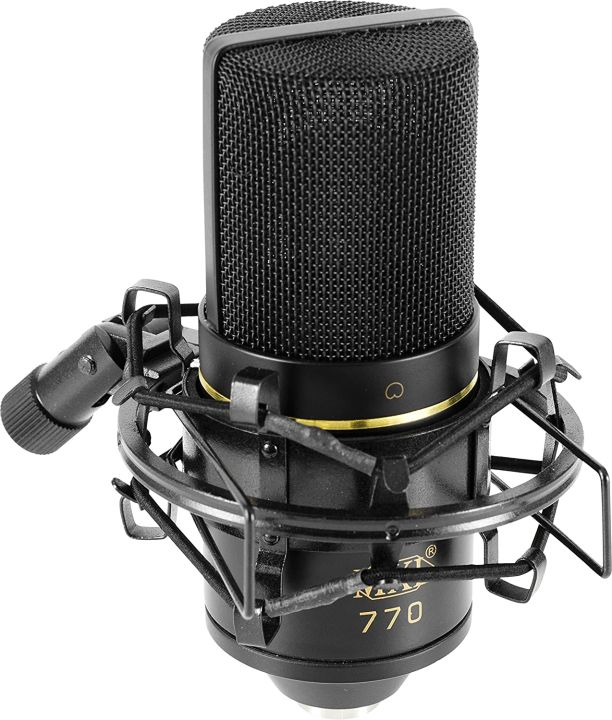
Overview:
The MXL 770 is a small-diaphragm, cardioid condenser microphone that strikes a great balance between affordability and quality. It’s become a popular choice for those in the home studio or podcasting environment who seek a mic that can handle a variety of vocal and instrument recording tasks without breaking the bank. Right off the bat, I’m impressed with its solid build and the flexibility it provides for newbie audio enthusiasts and experienced sound engineers alike.
One of the first things you may notice about the MXL 770 is its warmth and clarity—it’s particularly good at capturing nuanced vocal performances while also offering a surprisingly rich low-end that you might not expect from a mic in this price range. This makes it a versatile option for everything from singing and spoken word to recording string instruments and pianos.
Another noteworthy aspect is its balanced output that minimizes noise, which is a big plus if you’re working in a less-than-ideal recording space. The inclusion of a -10 dB attenuation switch and a low-frequency roll-off is a testament to the MXL 770’s adaptability, allowing you to tweak the mic’s response to best suit the recording situation.
Specs:
- Type: Condenser microphone
- Polar Pattern: Cardioid
- Frequency Response: 30Hz – 20kHz
- Sensitivity: 15mV/Pa
- Output Impedance: 150 ohms
- Pre-attenuation Switch: -10 dB
- High Pass Filter: 6 dB/octave at 150Hz
- Capsule Size: 22mm/.87 in
Pros:
- The warmth and fullness of the MXL 770’s sound are quite impressive; it brings out a professional edge in vocal recordings.
- It’s straightforward and easy to set up, which is always a welcome feature for those just starting in recording.
- The added features like the attenuation switch and low-frequency roll-off provide a degree of control usually found in more expensive microphones.
- The build quality is robust for the price—it feels like a piece of gear that’s made to last.
Cons:
- It may require additional pop filters and shock mounts to achieve the best quality recording as these are not included.
- While the sound quality is impressive, it might not have the detail and nuance that higher-end mics possess, which could be a drawback for more professional setups.
- The MXL 770 is sensitive to sound, so it will pick up room noise if not used in a properly treated space.
Price:
The MXL 770 typically falls around the $80-$100 range, which is an exceptional value for the quality of recording it ensures. Bear in mind that you may want to invest in additional accessories to get the most out of your microphone, which could increase the overall cost.
In my opinion, the MXL 770 shines as a workhorse microphone that punches well above its weight class. It’s a sensible choice for anyone who wants to make a foray into better quality recordings while keeping an eye on their budget. The minor cons it presents are far outweighed by its overall performance and features, making it a smart purchase for budding audio enthusiasts. If you’re venturing into the world of home recording or podcasting and require a reliable, versatile microphone, the MXL 770 should definitely be on your shortlist.
Hollyland Lark M2S

Overview:
Unlike traditional condenser microphones, which usually require a dedicated setup and stands, this newly launched Hollyland Lark M2S is compact and lightweight. It is made with a titanium clip that firmly attaches to your clothing without any discomfort. Its logo-free design provides a polished and discreet appearance.
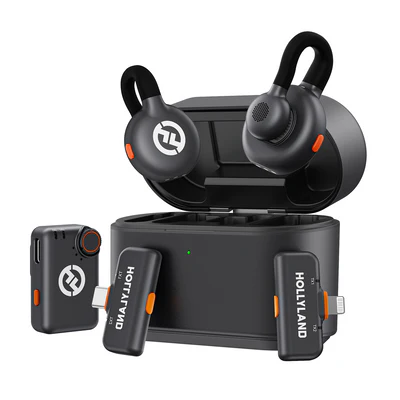
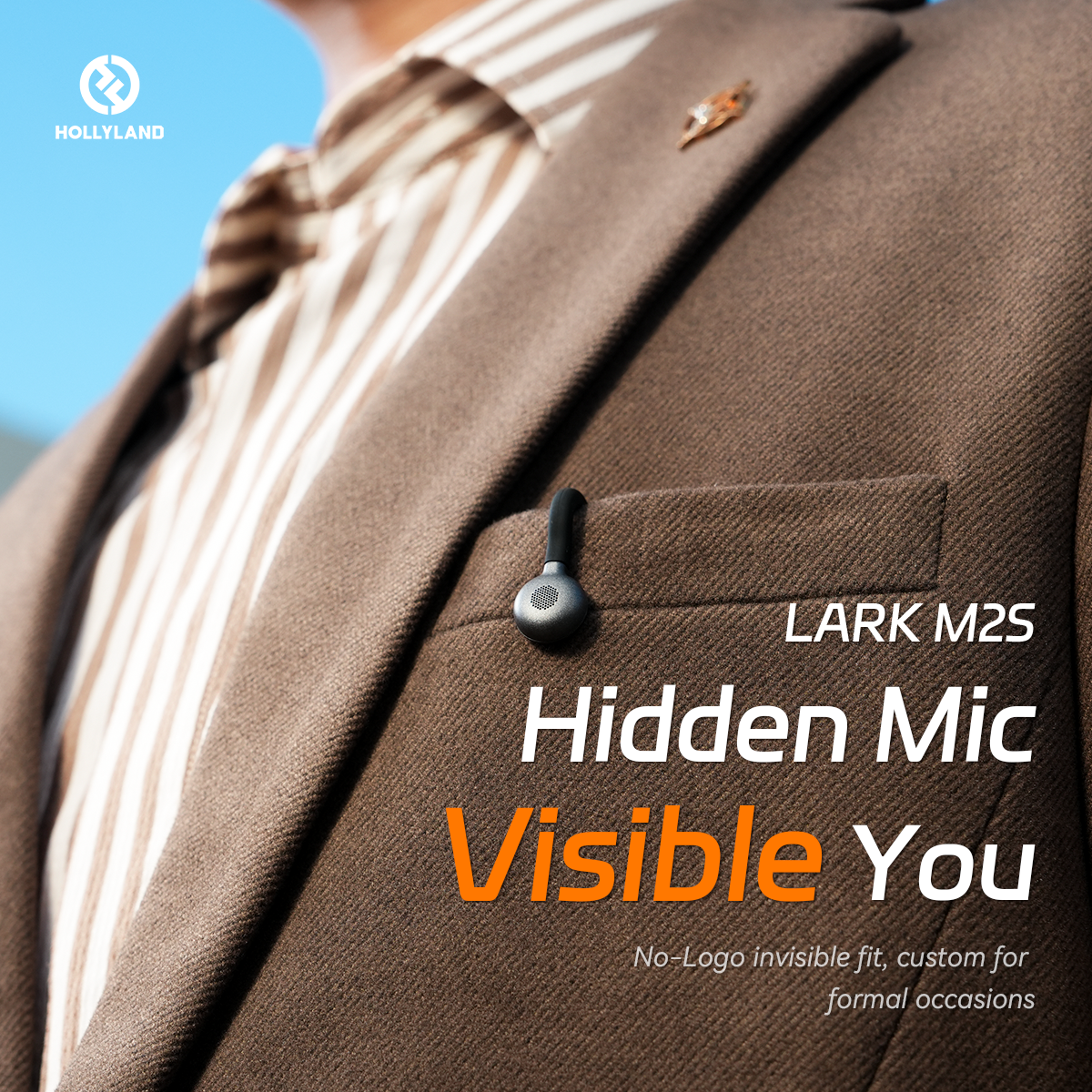
Hollyland LARK M2S - Wireless Hidden Microphone
An ultra-discreet wireless microphone featuring a clip-on transmitter for an “invisible” fit.
Key Features: No-Logo Fit | Ti+ Design | 48 kHz/24-bit
With 24-bit depth and 48kHz sample rate, this microphone offers detailed, natural, and clear sound. Its state-of-the-art Environmental Noise Cancellation (ENC) technology further improves the sound quality by reducing background noises. Plus, you can adjust up to two noise-canceling levels through the LarkSound app.
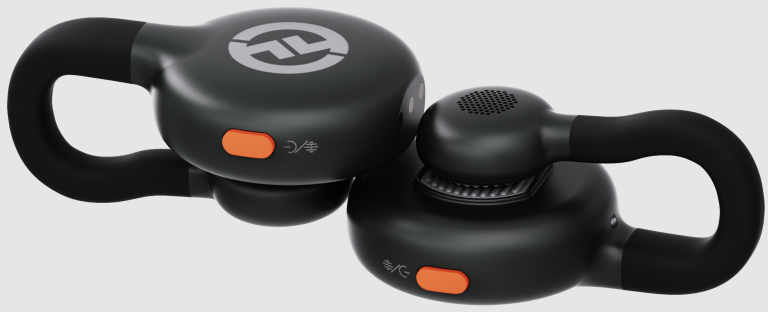
With Hollyland Lark M2S, you are no longer stuck to your desk! its 1000 feet (300 meters) of wireless range and 9 hours of battery life make you work on longer distances and extended hours. At the same time, this wireless microphone has a wide compatibility, including computers, cameras, and smartphones.
Strong and clear wireless transmission is its unique point that is not easily available in condenser microphones. Thanks to the RF interference-resistant circuit that allows you to record audio even in the city’s busiest streets and venues.
Specs:
- Maximum SPL: 116 dB
- Technology: 2.4GHz AFH
- Polar Pattern: Omnidirectional
- Bit Depth: 24-bit
- Sample Rate: 48kHz
- Wireless Range: Up to 1000ft
- Frequency Response: 20Hz – 20kHz
- Signal-to-Noise Ratio: > 70 dB
- TX battery life: Up to 9 hours
- RX battery life: Up to 8.5 hours (camera version)
- Microphone Sensitivity: -37 dBV +/- 2 dB @ 1kHz
Pros:
- Logo-free design gives a professional look to user
- Solid clip-on mechanism due to titanium
- It captures high-fidelity audio
- Effortless pairing and setup
Cons:
- It is not a typical condenser microphone shape and polar pattern-wise
Price:
Hollyland Lark M2S is a highly affordable microphone. Its USB-C 2TX 1RX version is available for just $119.00. Lark M2S wireless omnidirectional microphone can be a brilliant alternative to renowned condenser microphones, especially for users seeking convenience, portability, and professional audio quality.
Hollyland Lark 150

Overview
The Hollyland Lark 150 shines as a compelling alternative to regular condenser mics, despite being a wireless lavalier microphone. Made as a multipurpose microphone, it can be used for various recording requirements, especially when it comes to capturing two-person audio at the same time. That is one of the reasons why Lark 150 is ideal for podcasts, live streaming, indoor interviews, and more.
One of its attractive features is its compatibility with different types of devices. You can use it with cameras, tablets, smartphones, and computers without involving in challenging setups. Nevertheless, you may need an adapter cable to use it with your phone. But if you look at the bright side, the Hollyland Lark 150 is not a typical condenser microphone that you cannot use for other recording tasks. It is a one-time, cost-effective investment for the bigger and better content creation game.
Additionally, the Lark 150 has a Noise Buffer Design, which improves sound clarity by reducing unwanted background noises. This technology ensures you can successfully attain professional-standard audio without relying on traditional microphones, saving additional equipment costs without compromising sound quality.
The system also has a smart frequency scanning trait that automatically chooses interference-free channels for firm and uninterrupted connection no matter how crowded the place is. Moreover, it delivers audio signals with less than 0.05 seconds latency. It offers a wireless transmission range of up to 300 feet.
Furthermore, it has good battery timing, where each transmitter can perform wirelessly for up to 4 hours while the receiver stays functional for up to 7.5 hours.
Specs:
- Latency: <5ms
- Maximum SPL: 112dB
- Dynamic Range: 86dBA
- Technology: 2.4GHz AFH
- Polar Pattern: Omnidirectional
- Audio Input Level: -65dBV
- Audio Output Level: 21-Safe: 45dB
- Frequency Response: 20Hz – 20kHz
- Battery Life: 4 hours (TX) and 7.5 hours (RX)
- Charging Duration: 45 mins (TX) and 65 mins (RX)
Pros:
- Remarkable wireless range
- It has incredibly easy-to-use controls and menu options
- Lark 150 has excellent audio quality at inexpensive pricing
Cons:
- The transmitter battery time could be better
Price:
The Hollyland Lark 150 falls under the $200 range. It is normally priced at $179.95 on Amazon. However, the price may be further reduced if you choose the Solo Kit.
If you are looking for a condenser microphone, there may be some options than the Hollyland Lark 150 in terms of appearance. But if you look at the technical aspects and features, this wireless microphone is victorious over many popular condenser mics.
Conclusion:
In exploring the vast terrain of budget-friendly condenser microphones, we’ve seen that quality audio capture doesn’t demand deep pockets. Despite each offering its unique blend of features and sonic character, our curated selection stands as a testament that, even under $200, one can find a sterling mic for podcasts, music production, or streaming, balancing cost and performance in a manner once thought impossible.
FAQs:
- What should I consider when buying a condenser microphone under $200?
Look for features like polar patterns, frequency response, durability, and included accessories, as well as connectivity options like USB or XLR, depending on your setup requirements. - Can I get professional quality recordings with a budget condenser mic?
While high-end microphones offer certain advantages, many sub-$200 condenser mics provide excellent sound quality that can meet or even exceed the needs for amateur recording, podcasting, and streaming. - Do condenser mics under $200 require additional equipment?
Some may require a phantom power source, stand, shock mount, or pop filter. USB condenser mics often come as a complete set, making them more straightforward for plug-and-play use.

































.png)




